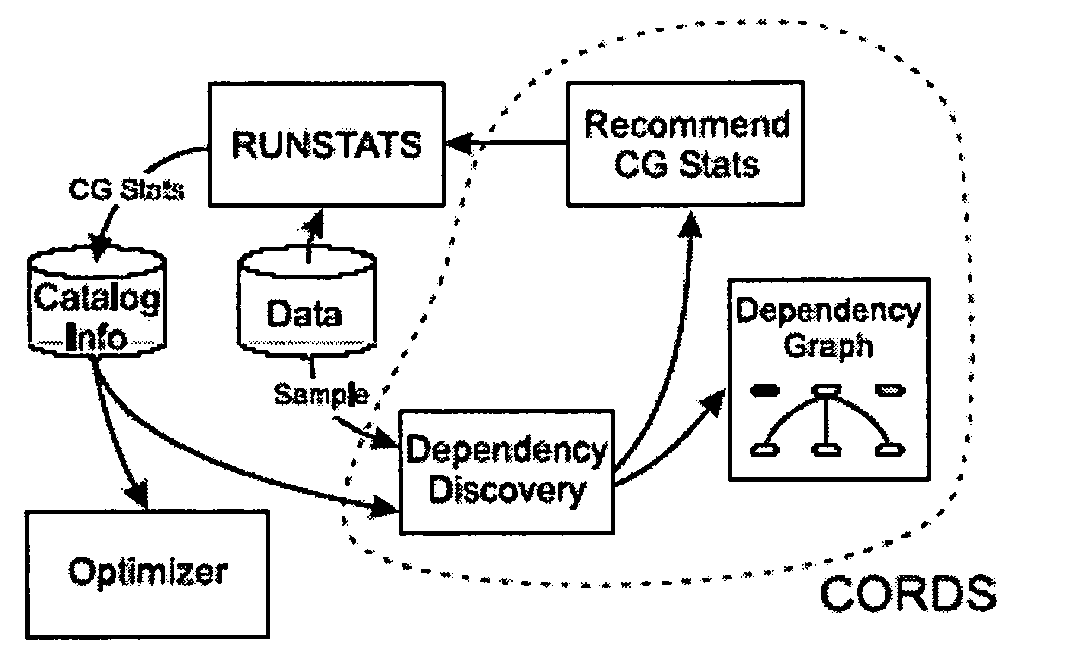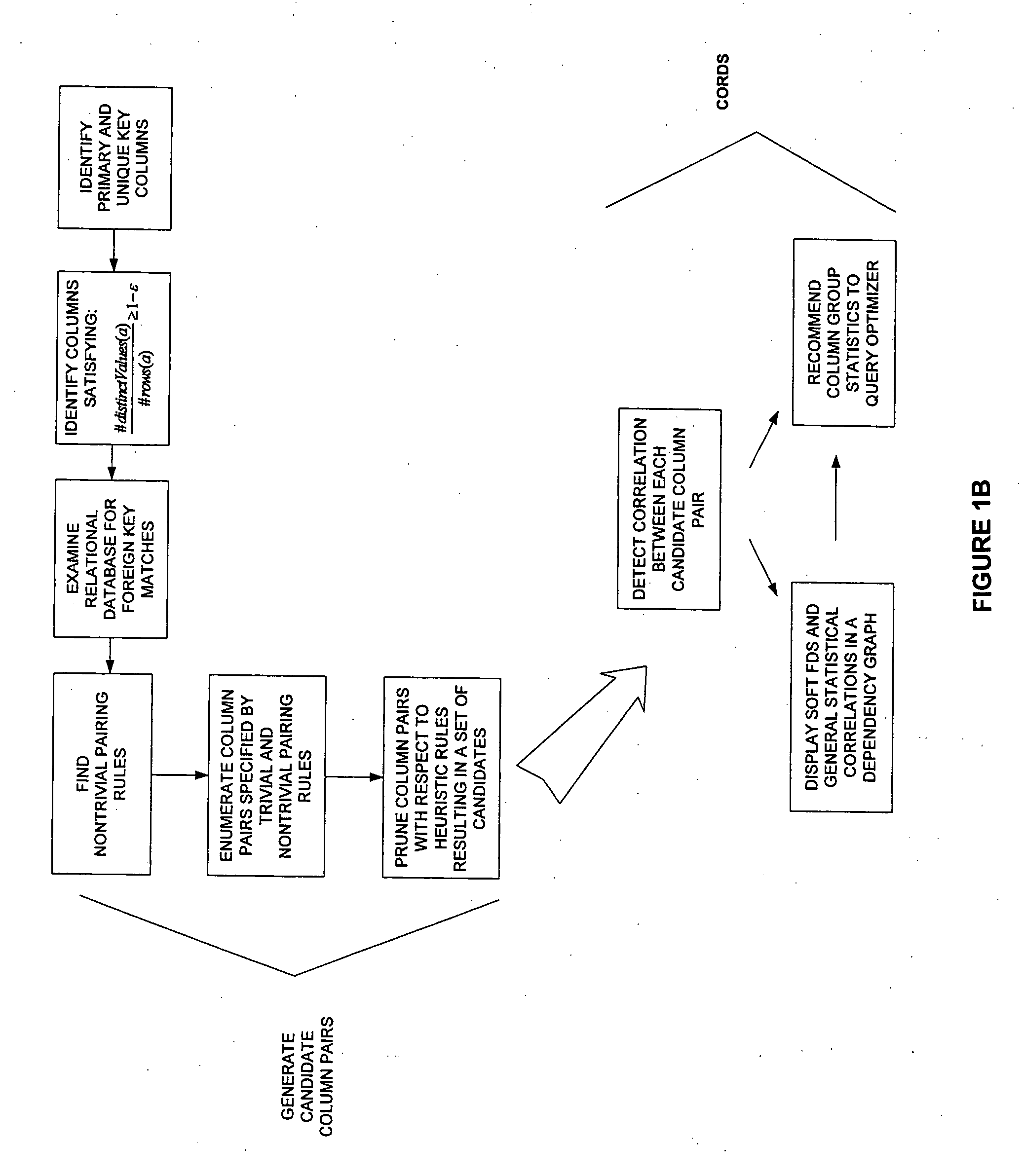Detecting correlation from data
a correlation detection and data technology, applied in the field of correlation detection and dependency discovery, can solve the problems of inaccuracy of query optimization estimates, spurious correlations, and selectivity underestimation of conjunctive predicates by several orders of magnitude, and achieve the effect of improving selectivity estimates and the greatest potential for impact in query optimization
- Summary
- Abstract
- Description
- Claims
- Application Information
AI Technical Summary
Benefits of technology
Problems solved by technology
Method used
Image
Examples
Embodiment Construction
[0029] While this invention is illustrated and described in a preferred embodiment, the invention may be produced in many different configurations. There is depicted in the drawings, and will herein be described in detail, a preferred embodiment of the invention, with the understanding that the present disclosure is to be considered as an exemplification of the principles of the invention and the associated functional specifications for its construction and is not intended to limit the invention to the embodiment illustrated. Those skilled in the art will envision many other possible variations within the scope of the present invention.
[0030] Referring now to FIG. 1a, a general system diagram of the present invention (hereafter, CORDS) is shown. A database utility, DB2 RUNSTATS 100, collects statistics on data in a relational database and records them in an associated system catalog 102. Relational data 104 is sampled; data is analyzed to determine dependencies and correlations 106...
PUM
 Login to View More
Login to View More Abstract
Description
Claims
Application Information
 Login to View More
Login to View More - R&D
- Intellectual Property
- Life Sciences
- Materials
- Tech Scout
- Unparalleled Data Quality
- Higher Quality Content
- 60% Fewer Hallucinations
Browse by: Latest US Patents, China's latest patents, Technical Efficacy Thesaurus, Application Domain, Technology Topic, Popular Technical Reports.
© 2025 PatSnap. All rights reserved.Legal|Privacy policy|Modern Slavery Act Transparency Statement|Sitemap|About US| Contact US: help@patsnap.com



